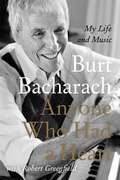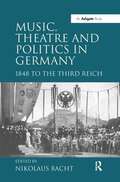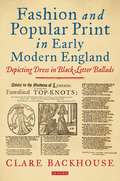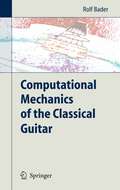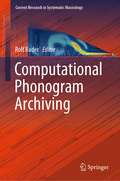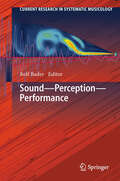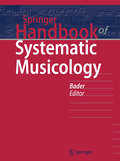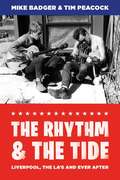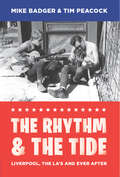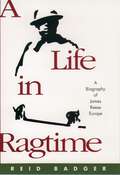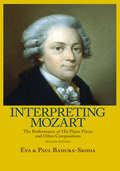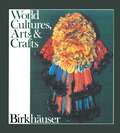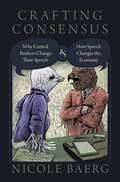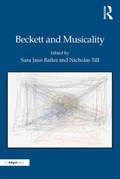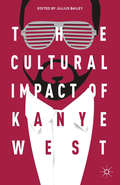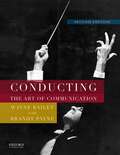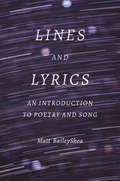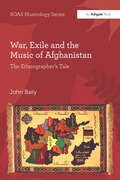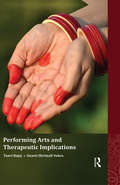- Table View
- List View
Anyone Who Had a Heart: My Life and Music
by Burt BacharachBurt Bacharach is one of the most celebrated and legendary song-writers of the twentieth century. Throughout his sixty year career he has worked with artists from Dionne Warwick to Dr Dre, Marlene Dietrich to Elvis Costello.Anyone Who Had a Heart is the story of one of the greatest song writers of all time. It traces for the first time in his own words, the life and times of the man who created the music that has become the sound track for the lives of his millions of devoted fans all over the world.Bacharach's songs include: 'Magic Moments' - Perry Como, ' Baby It's You' - The Shirelles / The Beatles, 'Please Stay' - The Drifters / Marc Almond, 'Wishin' and Hopin'' - Dionne Warwick / Dusty Springfield / Ani DiFranco, 'Walk On By' - Dionne Warwick / The Stranglers, 'I Just Don't Know What to Do with Myself' - Dusty Springfield / The White Stripes, '(There's) Always Something There to Remind Me' - Sandie Shaw, 'A Message to Martha' - Adam Faith, 'What's New Pussycat?' - Tom Jones, 'Trains and Boats and Planes' - Billy J. Kramer & the Dakotas, 'Alfie' - Cilla Black / Cher / Rumer, 'I Say a Little Prayer' - Dionne Warwick / Aretha Franklin, 'Do You Know the Way to San Jose?' - Dionne Warwick, 'Raindrops Keep Fallin' on My Head' - B.J. Thomas / Sacha Distel / Johnny Mathis, 'I'll Never Fall in Love Again' - Bobby Gentry, 'Arthur's Theme (Best That You Can Do)' - Burt Bacharach / Barry Manilow / Shirley Bassey.
Music, Theatre And Politics In Germany: 1848 To The Third Reich
by Nikolaus BachtMusic, theatre and politics have maintained a long-standing, if varying and problematic, relationship. In the Ancient World, the relationship used to be a harmonious one, scholars have us believe, glorifying the moment at the beginning of Western history when a political community, or polis, affirmed itself in a practice that purportedly achieved the perfect integration of music and theatre. To revive this original harmony was, of course, one of the main impulses that engendered the genre of opera. However, while it is widely recognized that the political represented a prius in the Ancient triangle of music, theatre and politics, there has been little attention to the status of the political in the triangle's modern variety. Nonetheless, the relationship between the three continues to be strong. In many contexts, the political still takes priority, encouraging or curbing artistic creativity. The contributions in this volume bridge the conventional chronological division between 'late Romantic' and 'modern' music to thematize a wide array of issues in the context of Germany. The contributors focus on a national tradition and period in which the friction between music, theatre and politics grew particularly intense. Major themes include: reception history; the entwining of aesthetic and political intentions on the part of composers, critics and historians; and the construction and/or critique of collective political identities in and through music theatre.
Fashion and Popular Print in Early Modern England: Depicting Dress in Black-Letter Ballads
by Clare BackhouseFashion featured in black-letter broadside ballads over a hundred years before fashion magazines appeared in England. In the seventeenth century, these single-sheet prints contained rhyming song texts and woodcut pictures, accessible to almost everyone in the country. Dress was a popular subject for ballads, as well as being a commodity with close material and cultural connections to them.This book analyses how the distinctive words and images of these ballads made meaning, both in relation to each other on the ballad sheet and in response to contemporary national events, sumptuary legislation, religious practice, economic theory, the visual arts and literature. In this context, Clare Backhouse argues, seventeenth-century ballads increasingly celebrated the proliferation of print and fashionable dress, envisioning new roles for men and women in terms of fashion consumption and its importance to national prosperity. The book demonstrates how the hitherto overlooked but extensive source material that these ballads offer can enrich the histories of dress, art and culture in early modern England.
Computational Mechanics of the Classical Guitar
by Rolf BaderComputational Mechanics of the Classical Guitar describes a new dynamic paradigm in instrument acoustics based on time-dependent transient analysis and simulation of complete musical instruments. It describes the current state of theoretical and experimental research into the guitar for engineers, instrument makers and musicians. This includes a summary of the basic equations for the mechanics of vibrating bodies and a presentation of the FDM (finite difference method) model with which the true vibrational behaviour of the instrument as an entire system can be understood for the first time. This monograph presents various new theoretical and experimental results and insights into guitar playing such as the coupling between the strings and the top plate or a description of the finger noise made when the fingers slide over the strings before plucking.
Computational Phonogram Archiving (Current Research in Systematic Musicology #5)
by Rolf BaderThe future of music archiving and search engines lies in deep learning and big data. Music information retrieval algorithms automatically analyze musical features like timbre, melody, rhythm or musical form, and artificial intelligence then sorts and relates these features. At the first International Symposium on Computational Ethnomusicological Archiving held on November 9 to 11, 2017 at the Institute of Systematic Musicology in Hamburg, Germany, a new Computational Phonogram Archiving standard was discussed as an interdisciplinary approach. Ethnomusicologists, music and computer scientists, systematic musicologists as well as music archivists, composers and musicians presented tools, methods and platforms and shared fieldwork and archiving experiences in the fields of musical acoustics, informatics, music theory as well as on music storage, reproduction and metadata. The Computational Phonogram Archiving standard is also in high demand in the music market as a search engine for music consumers. This book offers a comprehensive overview of the field written by leading researchers around the globe.
How Music Works: A Physical Culture Theory
by Rolf BaderHow do we understand culture and shape its future? How do we cross the bridge between culture as ideas and feelings and physical, cultural objects, all this within the endless variety and complexity of modern and traditional societies? This book proposes a Physical Culture Theory, taking culture as a self-organizing impulse pattern of electric forces. Bridging the gap to consciousness, the Physical Culture Theory proposes that consciousness content, what we think, hear, feel, or see is also just this: spatio-temporal electric fields. Music is a perfect candidate to elaborate on such a Physical Culture Theory. Music is all three, musical instrument acoustics, music psychology, and music ethnology. They emerge into living musical systems like all life is self-organization. Therefore the Physical Culture Theory knows no split between nature and nurture, hard and soft sciences, brains and musical instruments. It formulates mathematically complex systems as Physical Models rather than Artificial Intelligence. It includes ethical rules for maintaining life and finds culture and arts to be Human Rights. Enlarging these ideas and mathematical methods into all fields of culture, ecology, economy, or the like will be the task for the next decades to come.
Sound - Perception - Performance (Current Research in Systematic Musicology #1)
by Rolf BaderMusical Performance covers many aspects like Musical Acoustics, Music Psychology, or motor and prosodic actions. It deals with basic concepts of the origin or music and its evolution, ranges over neurocognitive foundations, and covers computational, technological, or simulation solutions. This volume gives an overview about current research in the foundation of musical performance studies on all these levels. Recent concepts of synchronized systems, evolutionary concepts, basic understanding of performance as Gestalt patterns, theories of chill as performance goals or historical aspects are covered. The neurocognitive basis of motor action in terms of music, musical syntax, as well as therapeutic aspects are discussed. State-of-the-art applications in performance realizations, like virtual room acoustics, virtual musicians, new concepts of real-time physical modeling using complex performance data as input or sensor and gesture studies with soft- and hardware solutions are presented. So although the field is still much larger, this volume presents current trends in terms of understanding, implementing, and perceiving performance.
Springer Handbook of Systematic Musicology (Springer Handbooks)
by Rolf BaderThis unique reference book offers a holistic description of the multifaceted field of systematic musicology, which is the study of music, its production and perception, and its cultural, historical and philosophical background. The seven sections reflect the main topics in this interdisciplinary subject. The first two parts discuss musical acoustics and signal processing, comprehensively describing the mathematical and physical fundamentals of musical sound generation and propagation. The complex interplay of physiology and psychology involved in sound and music perception is covered in the following sections, with a particular focus on psychoacoustics and the recently evolved research on embodied music cognition. In addition, a huge variety of technical applications for professional training, music composition and consumer electronics are presented. A section on music ethnology completes this comprehensive handbook. Music theory and philosophy of music are imbedded throughout. Carefully edited and written by internationally respected experts, it is an invaluable reference resource for professionals and graduate students alike.
The Rhythm and the Tide: Liverpool, The La's and Ever After
by Mike Badger Tim PeacockLiverpool in the 1980s. With prospects for the city’s youth bleak, a scheme for unemployed musicians commenced, inadvertently shaping the future for members of Cast, Space, the Lightning Seeds and giving fresh impetus to the idea of song as a saviour for the city. Foremost of the bands to emerge from this ill-fated scheme was The La’s. Inspired by a chance meeting with Captain Beefheart, Mike Badger formed the band with the enigmatic Lee Mavers. First they conquered the city, and then on the brink of hitting the big time, and eventually inspiring what would become Britpop, Badger quit to form Americana pioneers The Onset, find international recognition as a sculptor, produce album art and videos for some of the country’s biggest bands, before finally co-founding Liverpool’s Viper record label (which has recently released its 100th album). Featuring everyone from Arthur Lee to Frank Sidebottom, Jonathan Richman to Half Man Half Biscuit, and above all with new insights into the early years of the great lost Liverpool band The La's, The Rhythm and the Tide is both the personal story of a restlessly creative individual, and a reflection on the ebb and flow of the music scene in the city that he loves.
The Rhythm and the Tide: Liverpool, The La's and Ever After
by Mike Badger Tim PeacockLiverpool in the 1980s. With prospects for the city’s youth bleak, a scheme for unemployed musicians commenced, inadvertently shaping the future for members of Cast, Space, the Lightning Seeds and giving fresh impetus to the idea of song as a saviour for the city. Foremost of the bands to emerge from this ill-fated scheme was The La’s. Inspired by a chance meeting with Captain Beefheart, Mike Badger formed the band with the enigmatic Lee Mavers. First they conquered the city, and then on the brink of hitting the big time, and eventually inspiring what would become Britpop, Badger quit to form Americana pioneers The Onset, find international recognition as a sculptor, produce album art and videos for some of the country’s biggest bands, before finally co-founding Liverpool’s Viper record label (which has recently released its 100th album). Featuring everyone from Arthur Lee to Frank Sidebottom, Jonathan Richman to Half Man Half Biscuit, and above all with new insights into the early years of the great lost Liverpool band The La's, The Rhythm and the Tide is both the personal story of a restlessly creative individual, and a reflection on the ebb and flow of the music scene in the city that he loves.
A Life in Ragtime: A Biography of James Reese Europe
by Reid BadgerIn 1919, the world stood at the threshold of the Jazz Age. The man who had ushered it there, however, lay murdered--and would soon plunge from international fame to historical obscurity. It was a fate few would have predicted for James Reese Europe; he was then at the pinnacle of his career as a composer, conductor, and organizer in the black community, with the promise of even greater heights to come. "People don't realize yet today what we lost when we lost Jim Europe," said pianist Eubie Blake. "He was the savior of Negro musiciansin a class with Booker T. Washington and Martin Luther King." In A Life in Ragtime , Reid Badger brilliantly captures this fascinating life, tracing a critical chapter in the emergence of jazz through one man's remarkable odyssey. After an early start in Washington, Europe found his fame in New York, the entertainment capital of turn-of-the-century America. In the decade before the First World War, he emerged as an acknowledged leader in African-American musical theater, both as a conductor and an astonishingly prolific composer. Badger reveals a man of tremendous depths and ambitions, constantly aspiring to win recognition for black musicians and wider acceptance for their music. He toiled constantly, working on benefit concerts, joining hands with W.E.B. Du Bois, and helping to found a black music school--all the while winning commercial and critical success with his chosen art. In 1910, he helped create the Clef Club, making it the premiere African-American musical organization in the country during his presidency. Every year from 1912 to 1914, Europe led the Clef Club orchestra in triumphant concerts at Carnegie Hall, winning new respectability and popularity for ragtime. He went on to a tremendously successful collaboration with Vernon and Irene Castle, the international stars who made social dancing a world-wide rage. Along the way, Europe helped to revolutionize American music--and Badger provides fascinating details of his innovations and wide influence. In World War I, the musical pioneer won new fame as the first African-American officer to lead men into combat in that conflict--but he was best known as band leader for the all-black 15th Infantry Regiment. As the "Hellfighters" of the 15th racked up successes on the battlefield, Europe's band took France by storm with the new sounds of jazz. In 1919, the soldiers returned to New York in triumph, and Europe was the toast of the city. Then, just a few months later, he was dead--stabbed to death by a drummer in his own orchestra. From humble beginnings to tragic end, the story of Jim Europe comes alive in Reid Badger's account. Weaving in the wider story of our changing culture, music, and racial conflict, Badger deftly captures the turbulent, promising age of ragtime, and the drama of a triumphant life cut short.
Interpreting Mozart: The Performance of His Piano Pieces and Other Compositions
by Eva Badura-Skoda Paul Badura-SkodaOriginally published in German as Interpreting Mozart on the Keyboard in 1957, this definitive work on the performance of Mozart's works has greatly influenced students and scholars of keyboard literature and of Mozart. Now, in a completely updated and revised edition, this book includes the last half century of scholarship on Mozart's music, addressing the elements of performance and problems that may occur in performing Mozart's works on modern instruments.
Interpreting Mozart: The Performance of His Piano Pieces and Other Compositions (Da Capo Press Music Reprint Ser.)
by Eva Badura-Skoda Paul Badura-SkodaOriginally published in German as Interpreting Mozart on the Keyboard in 1957, this definitive work on the performance of Mozart's works has greatly influenced students and scholars of keyboard literature and of Mozart. Now, in a completely updated and revised edition, this book includes the last half century of scholarship on Mozart's music, addressing the elements of performance and problems that may occur in performing Mozart's works on modern instruments.
Kulturen Handwerk Kunst: Art, Artisanat et Société World Cultures, Arts and Crafts
by BAER HAUSER SEILER KAUFMANN RAMSEYER HAAS NABHOLZ BOSER GANTNERCrafting Consensus: Why Central Bankers Change Their Speech and How Speech Changes the Economy
by Nicole BaergIn a world dependent on the constant sharing of information, central bankers increasingly communicate their policies to the mass public. Central bank communications are drafted in monetary policy committee meetings composed of policymakers with differing interests. Despite their differences, committee members must come together, write, and agree to an official policy statement. Once released to the public, central bank communications then affect citizens' actions and ultimately, the economy. But how exactly does this work? In Crafting Consensus, Nicole Baerg explains how the transparency of central bank communication depends on the configuration of committee members' preferences. Baerg argues that monetary policy committees composed of members with differing preferences over inflation are better suited to communicating precise information with the public. These diverse committees produce central bank statements of higher quality and less uncertainty than those from more homogeneous committees. Additionally, she argues that higher quality statements more effectively shape individuals' inflation expectations and move the economy in ways that policymakers intend. Baerg demonstrates that central bankers are not impartial technocrats and that their preferences and the institutional rules where they work matter for understanding the politics of monetary policy and variations in economic performance over time. Conducting empirical analysis from historical archival data, textual analysis, machine-learning, survey experiments, and cross-sectional time-series data, Crafting Consensus offers a new theory of committee decision making and a battery of empirical tests to provide a rich understanding of modern-day central banking.
Crafting Consensus: Why Central Bankers Change Their Speech and How Speech Changes the Economy
by Nicole BaergIn a world dependent on the constant sharing of information, central bankers increasingly communicate their policies to the mass public. Central bank communications are drafted in monetary policy committee meetings composed of policymakers with differing interests. Despite their differences, committee members must come together, write, and agree to an official policy statement. Once released to the public, central bank communications then affect citizens' actions and ultimately, the economy. But how exactly does this work? In Crafting Consensus, Nicole Baerg explains how the transparency of central bank communication depends on the configuration of committee members' preferences. Baerg argues that monetary policy committees composed of members with differing preferences over inflation are better suited to communicating precise information with the public. These diverse committees produce central bank statements of higher quality and less uncertainty than those from more homogeneous committees. Additionally, she argues that higher quality statements more effectively shape individuals' inflation expectations and move the economy in ways that policymakers intend. Baerg demonstrates that central bankers are not impartial technocrats and that their preferences and the institutional rules where they work matter for understanding the politics of monetary policy and variations in economic performance over time. Conducting empirical analysis from historical archival data, textual analysis, machine-learning, survey experiments, and cross-sectional time-series data, Crafting Consensus offers a new theory of committee decision making and a battery of empirical tests to provide a rich understanding of modern-day central banking.
Beckett and Musicality
by Sara Jane Bailes Nicholas TillDiscussion concerning the ’musicality’ of Samuel Beckett’s writing now constitutes a familiar critical trope in Beckett Studies, one that continues to be informed by the still-emerging evidence of Beckett’s engagement with music throughout his personal and literary life, and by the ongoing interest of musicians in Beckett’s work. In Beckett’s drama and prose writings, the relationship with music plays out in implicit and explicit ways. Several of his works incorporate canonical music by composers such as Schubert and Beethoven. Other works integrate music as a compositional element, in dialogue or tension with text and image, while others adopt rhythm, repetition and pause to the extent that the texts themselves appear to be ’scored’. But what, precisely, does it mean to say that a piece of prose or writing for theatre, radio or screen, is ’musical’? The essays included in this book explore a number of ways in which Beckett’s writings engage with and are engaged by musicality, discussing familiar and less familiar works by Beckett in detail. Ranging from the scholarly to the personal in their respective modes of response, and informed by approaches from performance and musicology, literary studies, philosophy, musical composition and creative practice, these essays provide a critical examination of the ways we might comprehend musicality as a definitive and often overlooked attribute throughout Beckett’s work.
Beckett and Musicality
by Sara Jane Bailes Nicholas TillDiscussion concerning the ’musicality’ of Samuel Beckett’s writing now constitutes a familiar critical trope in Beckett Studies, one that continues to be informed by the still-emerging evidence of Beckett’s engagement with music throughout his personal and literary life, and by the ongoing interest of musicians in Beckett’s work. In Beckett’s drama and prose writings, the relationship with music plays out in implicit and explicit ways. Several of his works incorporate canonical music by composers such as Schubert and Beethoven. Other works integrate music as a compositional element, in dialogue or tension with text and image, while others adopt rhythm, repetition and pause to the extent that the texts themselves appear to be ’scored’. But what, precisely, does it mean to say that a piece of prose or writing for theatre, radio or screen, is ’musical’? The essays included in this book explore a number of ways in which Beckett’s writings engage with and are engaged by musicality, discussing familiar and less familiar works by Beckett in detail. Ranging from the scholarly to the personal in their respective modes of response, and informed by approaches from performance and musicology, literary studies, philosophy, musical composition and creative practice, these essays provide a critical examination of the ways we might comprehend musicality as a definitive and often overlooked attribute throughout Beckett’s work.
The Cultural Impact of Kanye West
by Julius BaileyThrough rap and hip hop, entertainers have provided a voice questioning and challenging the sanctioned view of society. Examining the moral and social implications of Kanye West's art in the context of Western civilization's preconceived ideas, the contributors consider how West both challenges religious and moral norms and propagates them.
Lines and Lyrics: An Introduction to Poetry and Song
by Matt BaileySheaAn introduction to poetry geared toward the study of songBruce Springsteen, Benjamin Britten, Kendrick Lamar, Sylvia Plath, Outkast, and Anne Sexton collide in this inventive study of poetry and song. Drawing on literary poetry, rock, rap, musical theater, and art songs from the Elizabethan period to the present, Matt BaileyShea reveals how every issue in poetry has an important corresponding status in song, but one that is always transformed. Beginning with a discussion of essential features such as diction, meter, and rhyme, the book progresses into the realms of lineation, syntax, form, and address, and culminates in an analysis of two complete songs. Throughout, BaileyShea places classical composers and poets in conversations with contemporary songwriters and musicians (T. S. Eliot and Johnny Cash, Aaron Copland and Pink Floyd) so that readers can make close connections across time, genres, and fields, but also recognize inherent differences. To aid the reader, the author has created a Spotify playlist of all the music discussed in this book and provides time cues throughout, enabling readers to listen to the music as they read.
War, Exile and the Music of Afghanistan: The Ethnographer’s Tale (SOAS Studies in Music)
by John BailyIn the 1970s John Baily conducted extensive ethnomusicological research in Afghanistan, principally in the city of Herat but also in Kabul. Then, with Taraki’s coup in 1978, came conflict, war, and the dispersal of many musicians to locations far and wide. This new publication is the culmination of Baily’s further research on Afghan music over the 35 years that followed. This took him to Afghanistan, Pakistan, Iran, the USA, Australia and parts of Europe - London, Hamburg and Dublin. Arranged chronologically, the narrative traces the sequence of political events - from 1978, through the Soviet invasion, to the coming of the Taliban and, finally, the aftermath of the US-led invasion in 2001. He examines the effects of the ever-changing situation on the lives and works of Afghan musicians, following individual musicians in fascinating detail. At the heart of his analysis are privileged vignettes of ten musical personalities - some of friends, and some newly discovered. The result is a remarkable personal memoir by an eminent ethnomusicologist known for his deep commitment to Afghanistan, Afghan musicians and Afghan musical culture. John Baily is also an ethnographic filmmaker. Four of his films relating to his research are included on the downloadable resources that accompanies the text.
War, Exile and the Music of Afghanistan: The Ethnographer’s Tale (SOAS Studies in Music)
by John BailyIn the 1970s John Baily conducted extensive ethnomusicological research in Afghanistan, principally in the city of Herat but also in Kabul. Then, with Taraki’s coup in 1978, came conflict, war, and the dispersal of many musicians to locations far and wide. This new publication is the culmination of Baily’s further research on Afghan music over the 35 years that followed. This took him to Afghanistan, Pakistan, Iran, the USA, Australia and parts of Europe - London, Hamburg and Dublin. Arranged chronologically, the narrative traces the sequence of political events - from 1978, through the Soviet invasion, to the coming of the Taliban and, finally, the aftermath of the US-led invasion in 2001. He examines the effects of the ever-changing situation on the lives and works of Afghan musicians, following individual musicians in fascinating detail. At the heart of his analysis are privileged vignettes of ten musical personalities - some of friends, and some newly discovered. The result is a remarkable personal memoir by an eminent ethnomusicologist known for his deep commitment to Afghanistan, Afghan musicians and Afghan musical culture. John Baily is also an ethnographic filmmaker. Four of his films relating to his research are included on the downloadable resources that accompanies the text.
Performing Arts and Therapeutic Implications
by Tanvi Bajaj Swasti Shrimali VohraPresenting an alternative perspective, this book proposes that performing arts forge an emotional bond between the performer and the audience, making the act of performance a therapeutic and restorative experience, and not merely recreational. Studying the life-experiences of six artists, and their unique engagement with three art forms — music, drama and dance — the book highlights the physical, emotional, mental, and spiritual effects of performing arts both on the performers and the audience. More importantly, it takes the current understanding of the therapeutic role of arts beyond a deficit model of health that focuses on their use in curing illnesses, disabilities and imbalances, towards a more positive growth-centric model that relates them to promoting holistic mental health, well-being and happiness. It thus bridges the gap between the theoretical understanding of creative arts therapy and the practical experience of performing arts in non-therapeutic settings. Further, it assumes increasing relevance with respect to fast-changing lifestyles to which stress and ill-health are often attributed. The book will appeal to artists, educators and researchers of performing arts, applied psychology, counselling and therapy, and cultural studies, as well as interested general readers.
